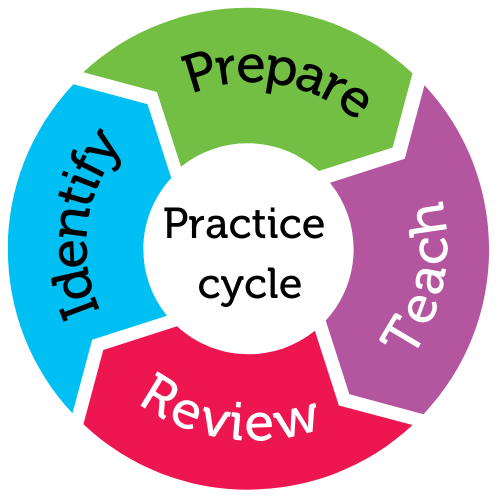
For student year
Helps students to
- learn new skills
- work independently
- build self-confidence
Helps teachers to
- teach new skills
- encourage independence
Summary
Some students, including those on the autism spectrum, find learning a new skill overwhelming. Breaking these new skills down into smaller steps can remove the barrier to skill acquisition. Task analysis is an evidence-based practice that supports students to learn complex new skills. Task analysis can help by breaking complicated new skills into smaller, more manageable parts so that they can be taught systematically.
How the practice works
Watch this video to learn more about this practice.
Duration 3:50
Australian Professional Standards for Teachers related to this practice
1.6 - strategies to support the full participation of students with disability
4.2 - manage classroom activities
For further information, see Australian Professional Standards for Teachers AITSL page
Preparing to teach
Choose and break down the task:
- Based on your assessment of the student, identify a skill to teach them.
- Identify the materials needed to teach the task.
- Break the skill down into smaller, more manageable steps (usually skills that the student can complete independently and are uncomplicated).
- Double-check that you have fully analysed the task. The skill may seem obvious to you, but may need to be broken down further for the student.
Decide how you will teach the skill and select the appropriate teaching method, e.g.:
- forward chaining: teaching the steps one by one, starting at the beginning
- For example learning to write a paragraph before writing a report
- For example learning to write a paragraph before writing a report
- backward chaining: teaching the steps one by one, starting at the end. This can be a good strategy when teaching a student who lacks confidence
- For example teaching a student to dry their hands before teaching them how to use the soap
- For example teaching a student to dry their hands before teaching them how to use the soap
- total task teaching: teaching all steps at once and providing support when the student gets stuck.
- For example washing hands may be taught as whole task - turning on the tap, using the soap, drying hands
It works better if the teacher:
- checks the sequence of steps with another student or colleague first and revises based on feedback
- understands how the student learns and processes information (i.e., do they respond better to visuals or verbal instructions?)
- understands how long the student needs to learn this skill (e.g., may require frequent repetitions)
- monitors and records the progress of the student learning the new skill.
It doesn’t work if:
- the task is not practiced often enough and in multiple contexts. Without repeated practice in different contexts, students may not generalise the skill, i.e. students will not learn to independently use the skill when needed in a variety of circumstances.
In the classroom
Step 1: Present the steps of the task to students
Use the age-appropriate and developmentally appropriate method you have planned, e.g.:
- forward chaining
- backward chaining
- total task teaching.
Step 2: Help students learn the steps of the task
Use methods such as:
- reinforcement
- video modelling
- time delay.
Step 3: Use positive reinforcement
Positively reinforce the student when the skill is completed correctly (see the Respond constructively to student behaviour practice).
Step 4: Reflect
Reflect on the task analysis. Was the skill broken down adequately? What alterations may be needed for next time? Did the student understand the task in the whole or do parts need changing/ reinforcing?
Practice toolkit
Practice implementation planner template
We know it's not always easy to keep track of what's working and what isn't. So, we've created this template for you to record and reflect on what you're doing to create more inclusive classrooms. The implementation planner contains:
- guidance around goal setting
- a reflection section (what worked, didn’t work, what to change, and next steps)
- prompting questions.
Implementation planner with examples
Set your professional learning goal for:
Use task analysis for skill development
Benefits of goal setting
Setting, working towards, and reflecting on goals helps you grow professionally and improve your practice. You can access AITSL learning resources for teachers to learn more about:How to set goals
The Australian Institute for Teaching and School Leadership recommends using the SMART matrix to frame your goal setting.SMART goals refers to goals that are:
- Specific
- Measurable
- Achievable
- Relevant
- Time-phased
Resources
Using task analysis for skill development - Practice Brief
Related Practices

Structure tasks using work systems
TEACHING PRACTICE
For student years
Helps students to
- plan and organise
- build independence
- understand expectations
This practice is from the core research project
Learning Cycle

